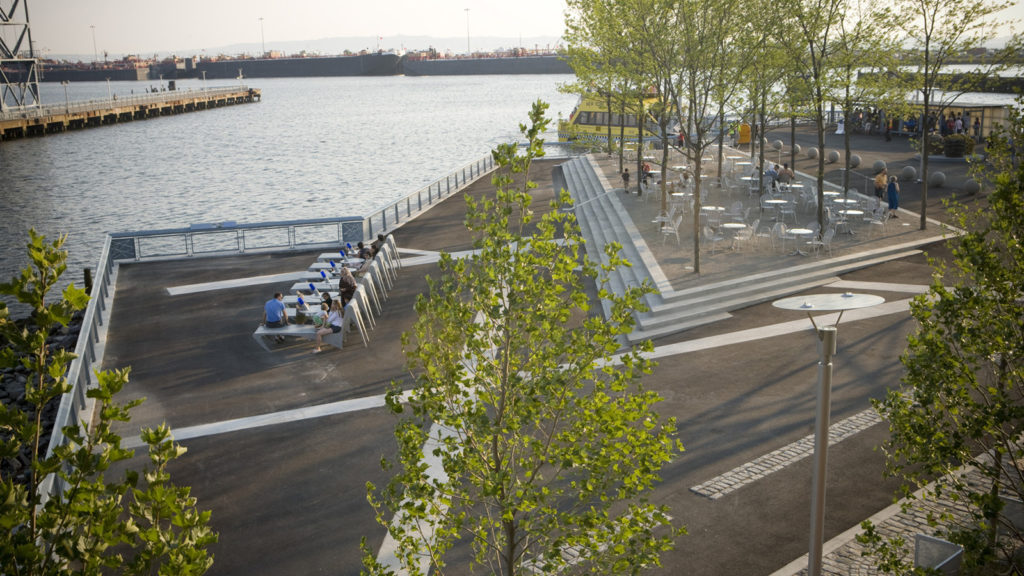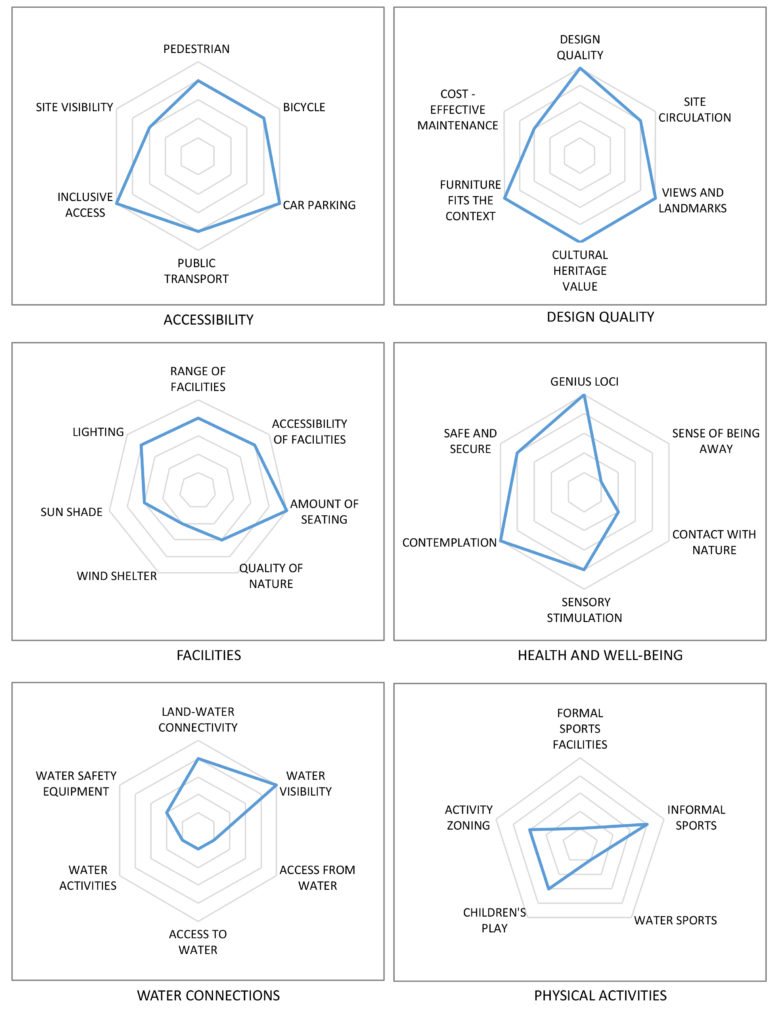
Architect
Lee Weintraub Landscape Architecture
Type of Area
Bay
Land/water interaction
Pier
Harbour
Riprap
Built Environment Types
Highly built
Low green
Scale of Impact
District/ neighbourhood
City
Intervention Scale (Spatial)
Moderate site
Project Types
Seafront development
Outdoor Recreation
Economic regeneration
Urban/ Rural
Inner urban area
Visibility and Openness
Fully enclosed
Fully contained view
Park with a Manhattan View
This project is a park on a former dockland area uniquely developed and completed in 2008 by a private company to designs by Lee Weintraub Landscape Architecture as part of a large IKEA retail store complex. Following the decline of the ports along the waterfronts of New York many areas became neglected. Red Hook is the neighbourhood next to the formerly busy Erie Basin and once had a substantial community of dock workers nearby.
Following the closure of the dock and general abandonment by industry, there was high unemployment and people moved away leaving the Erie Basin derelict. This has been redeveloped into a combined retail development (IKEA), public park and waterfront.
The park has a strong concept based on the stories and artefacts associated with the history of use of the site, featuring dock cranes, dry docks and piers as well as smaller objects. A key feature of the park is its views across the water to New York City – especially to the Manhattan skyline and the Statue of Liberty.
Normally, regenerated waterfronts act as catalysts for redevelopment of the surrounding areas and in this case it was not local authorities but the private sector who was responsible. The project landscape architects developed the layout and design of the site furniture by studying New York public park seating with the aim of introducing a new way of socialising while experiencing public open spaces.
The park is open to the public and vegetation and elements such as colourful corrugated sheets visually separate the store from the park, although entry to it is also via the store. A huge gantry crane marks the entrance. The designers salvaged many industrial elements such those which provide seating, shelter, and edge protection were inspired by the industrial heritage while long wave-shaped benches take inspiration from water movement. Lots of found objects, such as metal sheets folded to create seats were also used. Likewise, blue lights used under the circular tables mirror those typically used along the water edge for safety.
Perception and Meaning
Accessibility
Imageability
Sense of place
Legibility
Health and Wellbeing
Restorativeness
Aesthetic experience
Place affordance
Increases physical activities
Sense of being away
Interaction with Water
Visual

The scores show the project has very good accessibility, especially by car (given it is next to the Ikea store with a huge parking lot. The design quality is high across all aspects although site maintenance is considered to be high. The facilities are well-provided for although the site is exposed to sun and wind and there is not so much nature present (for obvious reasons).
It offers some good opportunities for health and well-being, apart from the sense of being away or contact with nature – due to its setting. As a former dock the direct contact with water is a problem and there is no direct recreational access to or from the water (there is some access by waterbus). There is no provision for formal sports on land or water – this is not relevant for the site due to its location.
